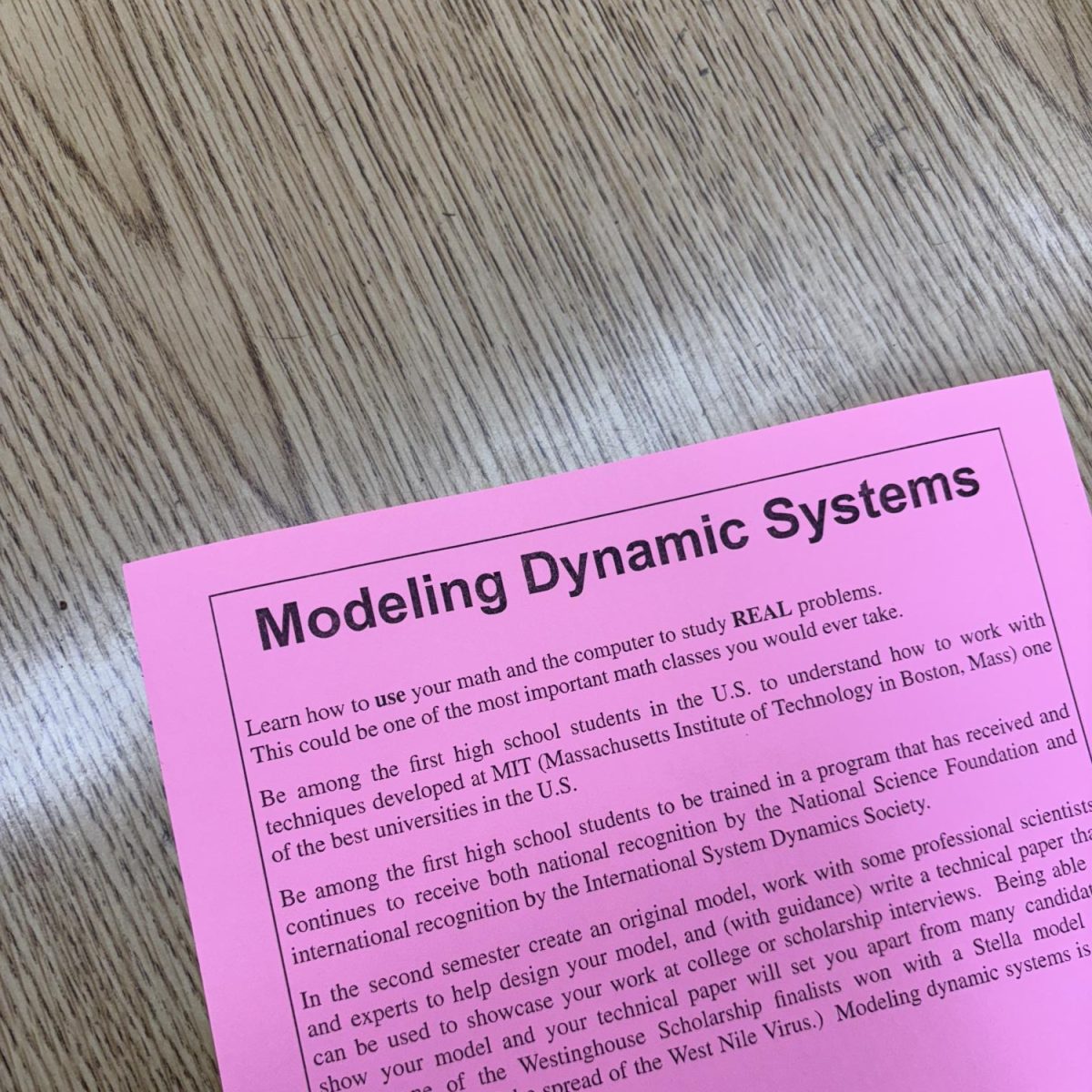As we move through the second semester, it’s time to forecast for the 2025-2026 school year. Next year, Ida B. Wells High School will offer a new math class, Dynamic Systems and Math Modeling, which offers a new approach to the typical math class.
The class will focus on real-world applications of math; students will study problems such as population growth/decline, the spread of illness, supply and demand, the various factors that affect these systems and how to model them.
Thor Esbensen, a math teacher and a track and cross-country coach at IBW, will teach it. “It’s a course that we’re going to anchor in the thought process of systems thinking,” he says. Esbensen describes “systems thinking” as taking a broader perspective when looking at issues and examining the flow of factors and effects.
“We tend to lend ourselves to looking at a problem and trying to fix the problem that we’re looking at, when a lot of times the solutions or the causes are outside of that specific problem,” says Esbensen. He gives the example of a student struggling with a knee problem and searching for what’s wrong with their knee when the root of the issue is weakness in their hip.
Jacob Jones is currently a junior at IBW and forecasting for Dynamic Systems. “I really like the teacher,” he says. “It seems like a really interesting elective.”
This will be Esbensen’s first year teaching the course, but this won’t be the first time Dynamic Systems will be taught at IBW. Diana Fisher previously taught it at IBW until the early 2010s. It is only now being re-implemented by Esbensen, who is working with Fisher. Fisher is currently teaching a college-level version of the course at Portland State University.
Una Allen, also an IBW junior, is planning on taking the class. “I don’t want to take another math class with homework and tests as I’m taking like four AP classes next year,” she says. While Dynamic Systems requires students to have taken up to Algebra 3-4, it is not a class that heavily relies on calculations, but rather modeling.
“We want to kind of capture the imagination of a couple [of] different types of students,” Esbensen says. “I think this is a way to see the math happening and really feel like you’re connected to it and how it’s affecting real things that you see.”
Dynamic Systems does not give homework or tests, making it an ideal option for students with busier schedules who cannot dedicate extra time outside of class to another class. “We’re hoping that it’s a challenging course, but not a stress-inducing course,” Esbensen says. The intended goal of the class is the learning aspect, especially for students with heavy workloads who previously may not have chosen to take another math class.
When forecasting for your 2025-26 classes, or later years, consider Dynamic SystemsThe deadline to complete forecasting is Feb. 24, 2025. This requires students to input their choices on StudentVue and meet with their counselor to review them. This can be done during flex, lunch, or before and after school.









